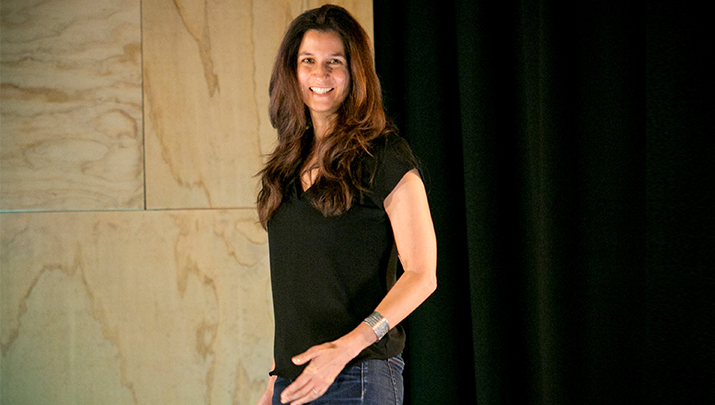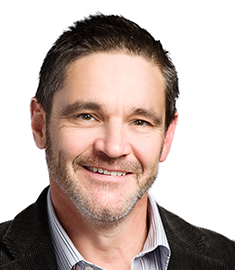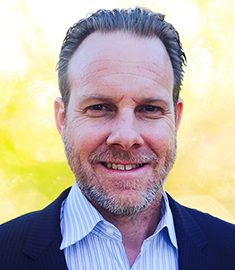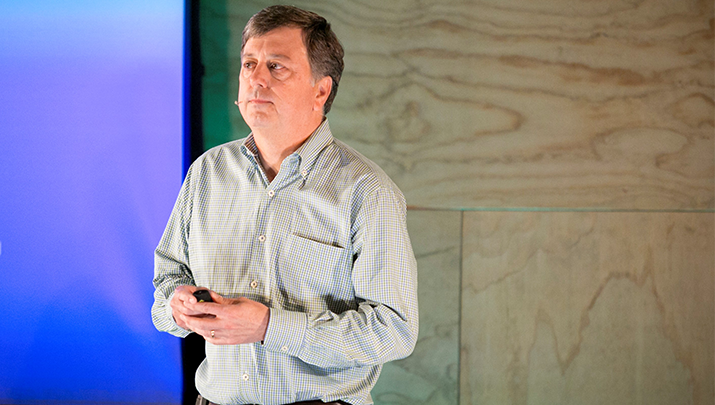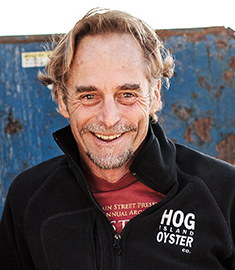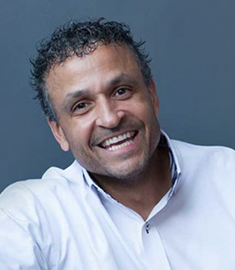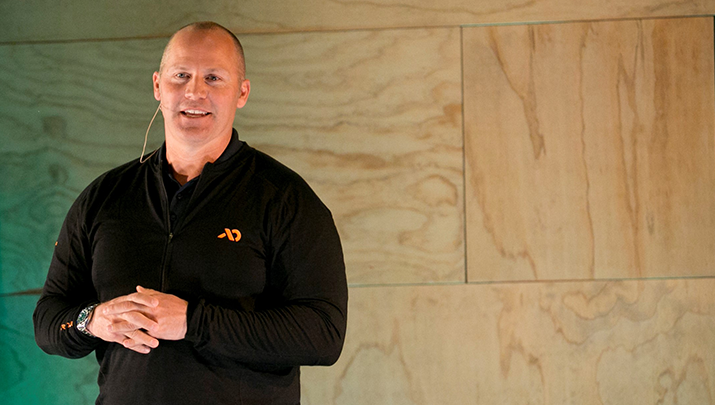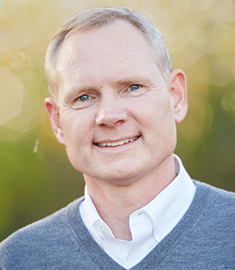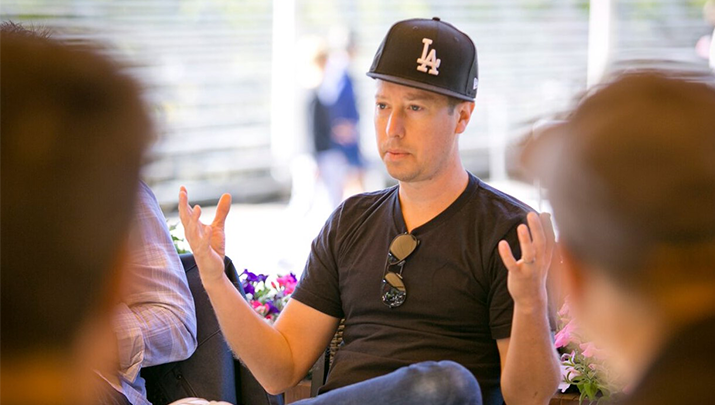Engineering a Comeback: From Biggest Crisis to Best Year Ever in 18 Months
Jessica Rovello is the co-founder and CEO of Arkadium, an online gaming company based in Ukraine and the U.S. that provides brands and publishers with interactive, brand-safe content. In early 2014, when 100 of her Ukraine-based employees were affected by the annexation of Crimea by the Russian Federation, Rovello’s commitment to Perseverance and putting People First was put to the test.
In her talk, Rovello walks us through a chronological series of geopolitical business challenges that nearly shut down her company. Through sheer grit and determination, Arkadium, within 18 months, went from the edge of despair to its highest year of revenue and profitability, all while solidifying its unique company culture.
Surviving Death Valley
In 2011, my co-founder and I had the kind of moment that most business owners dream about — several buyers were sniffing around our 15-year-old specialty-chemicals company, Essential Ingredients. But while a sale might have ushered us off to early retirement with bags of money, we worried that our employees would suddenly be jobless.
So instead we formed an employee stock ownership plan (ESOP), which gives ownership of the company via stocks to the employees. Since we had always made People First a priority, the ESOP seemed like the greatest way to provide our team with job security as well as a healthy retirement fund. We made the exciting announcement at our next big employee meeting. As our employees cheered, we felt sure we had made the right decision.
And then almost immediately the company went into a financial nosedive.
We call those first few months after forming the ESOP “Death Valley.” We were never able to determine any one thing that caused it, but this was the lowest point in our company’s history. The most stressful part was the fact that the company had just taken on significant bank debt (for the first time ever) to finance the purchase of the employee shares from my partners and me.
We (the original shareholders) were used to using our private assets as guarantees against small loans or lines of credit we had with the bank. However, we had never been under a bank covenant, which requires a banker to review our finances and results quarterly (which soon became monthly). This oversight put us under a whole new level of stress as we were now beholden to an outside party. Previously, if we had a bad month, we would be disappointed but we would adapt and adjust. Now we had outside eyes offering a cold critique of the numbers.
I found myself meddling a lot in sales matters, pushing our sales team for quick short-term results, working to cut costs and, in essence, regressing to running the business the very way I hated — by the numbers rather than by our values. It was a horrible experience. I remember meeting with our banker during this time over coffee, and he asked me that dreaded question, “What keeps you up at night?” I laughed and told him, “YOU do. When I close my eyes at night I see your face!”
When we realized this behavior was impacting our culture and the way we were driving the business, the original partners and I used closing funds we had received, reduced the bank debt and converted that to additional seller notes. This allowed us to dial back the financial pressure and run the business the way we always had, focusing on long-term results and working according to our mission.
The good news is that we were able to turn things around while staying true to our values. Today, our balance sheet is strong. We’ve enjoyed double-digit growth over the last several years, and sometime in the fourth quarter of 2018 we will be crossing $100 million in annual sales for the first time. While we rely on a bank for our credit line, we have no long-term debt and don’t plan to have any ever again. I won’t allow us to go back to working under that kind of unnecessary stress.
We’ve also been able to enhance employee engagement and financial understanding by adopting open-book management (based on the Great Game of Business). While we were building the business back up, we learned that, as an ESOP, there was no way for our people to truly feel like shareholders unless they had exposure to the numbers and the results on a regular basis.
Our employee-owners today feel more closely connected to the results because they assist in the construction of the plan and receive weekly updates on our joint progress. Almost everyone from the day of that announcement is still with us, and we have gained approximately 25 more employees. Our company shares have gone from $2.25 to more than $55 since the fall of 2011.
Times of crisis test one’s values and character, and significantly shape people and businesses. If things are going easy, there’s no reason to ask the hard questions. We Persevered through “Death Valley,” and I like to think enduring this trial only strengthened our resolve and that this strength will serve to sustain Essential Ingredients for many years to come.
Kris Maynard is the CEO of Essential Ingredients
Successful Habits
Grit, persistence, not taking no for an answer — these are some contributing factors that have helped our CEOs drive toward success. In this short video from Tugboat Institute Summit 2017, our members reflect on what’s made the biggest difference in their careers and what they continue to do each day to be successful.
Featuring: Robert Glazer, John Keatley, Jim Creel, Bryan Pape, Ross Evans and Rick Sutton.
Wildfire Sparks New Growth
Ten years ago, a wildfire tore through my family’s flower farm in Southern California. We grow more than 100 types of flowers and fresh greens, including eucalyptus, waxflower and avocados, and in less than 24 hours, they were basically all gone. We lost 80 percent of our crops as the shifting winds fanned flames across our 500 acres of rolling hills.
And the future looks pretty darn good. We are way better off now because of that wildfire. It refined us and made us stronger and more resilient as a team.
Jason Kendall is the owner of Kendall Farms.
Creating an Engaged Board
The roles and responsibilities of an Evergreen company board differ significantly from that of a publicly traded or exit-oriented company board. The dynamics between board, management, owners and family are more nuanced, with board influence varying significantly depending on the governance structure of the particular company. Chip Dickinson, CEO of sixth-generation E. Ritter & Company, has extensive experience with boards of directors and boards of advisers and shared his wisdom at last year’s Tugboat Institute Summit.
In his talk, Dickinson provides a helpful framework for the different types of boards that an Evergreen business can adopt, while explaining why an engaged board of directors is key to a company’s success.
Sustainable Innovations in Oysters
Thirty-five years ago, I was a restless marine biologist stuck working in restaurants to pay my rent. A fresh East Coast transplant in the Bay Area, I found myself spending a lot of time thinking about how diners could buy only raw East Coast oysters. Even though I was broke, I set out to achieve something previously unimaginable on the West Coast: sustainable raw oyster farming.
On the West Coast, oysters were naturally grown in clumps; by the time they were strong enough to break off, they were too big for raw consumption and generally used in stews or barbecues. I wanted to experiment with what oyster farmers were doing in Europe: the “single seed” method. This involves scattering the oyster larvae on powdered shell chips so they grow farther apart from one another.
The problem was, back in 1983, my partner, Terry Sawyer, and I didn’t have a lot of money to spend. We cobbled together some funds from our various odd jobs and managed to lease five acres of shellfish land in Tomales Bay, just north of San Francisco, and buy a handful of oyster seed.
We quickly discovered that the single-seed method allowed us to manipulate the oysters’ growth, making them smaller for half-shell consumption. We were among the first on the West Coast to implement this process for Pacific oysters.
With this first batch of Hog Island oysters — named after a nearby island — we quickly realized it was an uphill battle in the marketplace because people were suspicious of raw Pacific oysters. We spent months knocking on restaurant and wholesalers’ doors with samples, finally getting our break with an old friend at Marinelli Shellfish, a marketing and distribution company. Marinelli sold our oysters to Zuni Café and Chez Panisse, two local restaurants that were among the first to promote locally grown foods.
Yet in those early years, we could only harvest in winter because the shelf life of oysters isn’t very long in the warmer months. This meant we had no cash flow for many months out of the year — and we were struggling to get the business off the ground. In 1987, we took on a third-party investor to allow us to further innovate. We added chilled, filtered seawater tanks where we could store harvested live oysters year-round.
That was a game changer for us. We had recently set up a traveling oyster bar that catered events all over the Bay Area, and now it was open for business all year. And to further help with cash flow, we opened the gates at our bay location off scenic Highway 1 to people who wanted to stop in for an oyster.
We added picnic tables and then barbecue stations — and soon we lucked out with some great free marketing. Magazines like Sunset were writing about us, and suddenly we went from 100 percent wholesale, seasonal sales and waiting to get paid to having a booming year-round business.
But all through this exciting time, my partner and I were quietly fighting for our company’s life. Unfortunately, we had allowed an investor to own half of Hog Island Oyster Co., and by 1994, we were at loggerheads with this man, who would not agree to anything — and who was taking half our profits. We started the process of dissolving the company. It was a very dark period of time because we thought we were going to have to throw away all our innovation and efforts. I even did some carpentry work on the side, getting ready to figure out a new career. Through many rounds of grueling mediation, rather miraculously, we bought him out for $50,000 in 1995. We then brought in a group of like-minded investors — friends and family, people who believed in what we were doing — to restart the business.
That’s when our Evergreen company was truly hatched and our next wave of Pragmatic Innovation began. We wanted to be vertical — in part to never be dependent on anyone again — and set our sights on selling our oysters in our own restaurants. It took a couple years to gain back what we lost through the investor debacle, but in 2003, we opened our first restaurant in the SF Ferry Building. We doubled our revenues and employees in one year.
We loved the farm-to-table idea — we call it “bay to bar” — so we have decided to focus on this rather than wholesale. We have three restaurants in the Bay Area and recently purchased a fourth; we are very careful about our growth and have passed on many offers over the years.
We’ve just recently found a facility in Humboldt Bay where we can have an oyster hatchery and a nursery. This way, we are now producing our own seed, which we can grow to create oysters that we sell in our own restaurants. We think chain of custody is very important with this food. We only sell directly to restaurants — we want to know they are doing a good job, so we check it out. We have about 25 accounts in the Bay Area now. From October to May we ship nationally to just a few accounts. We do just a bit of wholesale these days to keep our name in the marketplace — and we handpick to whom we sell.
Another idea we’ve had recently is to create salt flats. We bought a 250-acre farm across the highway from us in Tomales Bay. We’d like to expand our wet storage tanks, but we can’t just release salt water onto that land. However, we might be able to harvest the sea salt in some way. There are a lot of cheese farms nearby that buy sea salt, so we think this might be a great symbiotic relationship.
Today we have 160 acres in the bay, and we harvest and sell over 3.5 million oysters, Manila clams and mussels every year. Our innovation strategies have shifted to joyful experimentation now that we have enough money to spend on our dreams. But every idea we act upon is always grounded in the reality and wisdom that comes from years of fighting to survive.
After all, Terry and I both have family who work here, including our sons. The exit strategy is simple: Never sell. All I want is sustainable growth and to set up the company for another 35 years of success.
John Finger is the co-founder and CEO of Hog Island Oyster Co.
My Father Was a Pimp and Drug Dealer
My father was a drug dealer and a pimp — a real pimp who put women on the street corner. My mother was a young woman from an orphanage who had no family, money or support. There’s no gentle way to describe it: My childhood was a hardscrabble affair marked by dramatic incidents of racism, drug abuse and neglect.
Today I lead an Evergreen company, Book in a Box, which helps people tell their own stories.
My mom loved me, but we were terribly poor, and she faced a lot of prejudice in ’70s Dayton, Ohio, as the unmarried white mother of a half-black child. One of my earliest memories is of returning home from the bus stop with my mom and seeing all our belongings lying on the curb outside our apartment. The landlord was outside yelling, “No nigger-lovers can live here.” I remember sitting on that curb crying.
When I turned 9, a complicated welfare issue forced me to move in with my dad, and those years were complete chaos. On a regular basis, I watched him beat women and bring home heroin-addicted prostitutes. They would force me to babysit some of my little half-siblings (my father had 23 children) as they brought johns back to the apartment. Once my father abruptly moved to England for a year, and left me with a prostitute and three of my half-siblings who were 4, 2 and 1 years old. The prostitute said she was going to get cigarettes, but didn’t return for three weeks. I had to teach the 4-year-old to babysit while I stole food. We had no diapers so I had to potty train the little ones. I remember stealing three Oreos for my little sister’s third birthday. When the prostitute finally came home, I asked where she had been, and she punched me so hard I fell to the floor. I was 12 years old.
That was when I left and started living on the streets. I lived in a bus stop for a while, but eventually ended up in juvenile detention for three months before an uncle took me in. My mother tracked me down when I was 15 and moved me back in with her, this time in San Antonio, Texas. I was in 10th grade, but testing at a fifth-grade level. I struggled through a couple rounds of summer school before finally graduating. A janitor handed me my diploma, and that was the end of my formal schooling.
After graduation, I received my call to action: My mom gave me two weeks to find a job. I found work cleaning toilets and tables at a local restaurant. The job was miserable and I longed to quit. But I never wanted to be on the streets again, so instead of complaining, I decided to be the best busboy and toilet cleaner in all of San Antonio. My toilets would sparkle, and my salt and peppers shakers would always be full. In a way, I found something better than a mentor: personal gratification in being successful at my job.
Thank god this youthful bout of optimism actually paid off. After about six months, a couple dining at the restaurant noticed my hard work and invited me to come make candles in their mall shop. I was earning more money and with lots of cute girls watching me through that window, I endeavored to be the best candlemaker there ever was.
I crossed the threshold into corporate life when my mother helped me land a job in the mail room where she had been working at Nationwide Mutual Insurance Company. Although my job was to sort mail, I treated it as an education, watching how the corporate people shook hands and communicated. It was so different than anything I had ever been exposed to — I memorized the cordial social cues.
But I didn’t see myself as having a future at this company. So when a friend told me about a job at a payday loan shop, even though it meant proofing deposit slips, one of the most tedious jobs there is, I took it. Right away I asked my manager what were the most reports ever proofed in a day — I doubled it the next, and continued to drive that number up.
Three months in, the owner took notice. He started teaching me about consumer finances and loans and, within a year, promoted me to a traveling vice president who checked on all the offices around the country. Eventually he sent me to Eugene, Oregon, where I was told to figure out how to open an office. I was 23.
I ran that office for three years and bought out two competitors. But I missed Texas, so I headed back down south. I ended up at Wachovia bank as a mortgage broker, just as the real estate crisis hit. It was the biggest ordeal of my career. I lost everything I had built up over the years. I was flat broke — no money to buy even new underwear or T-shirts.
By 2011, I found a job in sales as the lowest-paid employee at a software company. There I had a second chance and called upon my old work ethic. I knew nothing about software, but I did know how to sell and follow up on business relationships. I started calling the company's competitors to learn their pitches and taught myself how to sell software. Within seven months, I closed $1 million in sales — the year before they had $2.7 million in revenue, so this was not insignificant. I built relationships with large enterprise clients and climbed the executive ladder. In 2013, less than three years after I started, I became the company’s president. Under my steerage, we went from one office and 13 employees to over 100 employees and four offices, including one in Monterrey, Mexico.
I finally felt like I was reaping rewards in my professional life. But I still felt I had more to offer. I had come so far; I thought I could give back to the world by sharing the things I had learned along the way. I realized I wanted to write a book, and I reached out to Book in a Box, a company that helps people turn their ideas into books. It was a call that changed my life. With the company’s founder, Tucker Max, I wrote my memoir. I also ended up offering Book in a Box some advice about how to better manage and scale their company, and they invited me to join their board of advisers. One morning in 2016, they offered me the CEO position.
It was a job I gladly accepted, despite a dramatic pay cut. At the software company, I took only 11 days of vacation in five years. There’s a photo of me working on my laptop in the delivery room during the birth of my first child. It was very hard to leave the software company, but ultimately, I wasn’t passionate about software. On the other hand, at Book in a Box, I love hearing people’s stories; I love turning them into books. When I was a kid, I wasn’t even allowed to take books home with me because teachers were afraid we’d steal them.
I also love helping people find belief even in their darkest tales. And it helps me sort through my own conflicted thoughts on the people who populate my memories. My mom always told me to never judge anyone else — that everyone has a story.
Finally, I’m at peace with my father. I hadn’t spoken to him in 30 years, but I returned home to attend his funeral a couple years ago. It was a cathartic moment. After all, somehow I got to where I am today — perhaps because of, rather than in spite of, my roots.
JT McCormick is the president and CEO of Book in a Box
Trident Takeaways
American hero, Tugboat Fellow and business consultant Commander Rorke Denver is back on our stage giving us an update on his new projects and a few more memorable Trident Takeaways. We are grateful for the support Rorke’s shown to our Evergreen community. Most notably, Rorke shares with us what it means to constantly improve your position and reach for an extra inch.
Pragmatic Innovation Keeps Us Alive
Long before I even understood that our family business was Evergreen, my father was instinctively pursuing Pragmatic Innovation to survive challenging times.
Back in the 1980s, the farm crisis hit my home state of Iowa hard. It was devastating. As farmers lost their land or had to pinch pennies to avoid foreclosure, many of their businesses went under. But not our family’s John Deere equipment company, which my dad had bought in 1977. We had to make sacrifices as a family. Instead of cutting costs to the bone while hoping sales would come back, my dad focused on what innovative things we could do to drive new revenues and cash flow.
My father came up with the idea of creating a new attachment that could make farmers’ current field cultivators more efficient without having to completely replace the machinery. He manufactured this attachment, successfully marketed it and sold the patent to John Deere. My dad also figured out marketing programs that kept the dealership’s service department busy in the off-season. These ideas helped keep our business alive.
I was a teenager when I saw my father use innovation as a survival tactic. After working as an auditor for Union Pacific Railroad, I went on to business school at the University of Michigan, and then took a position as an online marketer for Hallmark Cards before working in my dad’s company for about five years. In 2006, I joined Southwest Airlines as marketing and strategy manager for Southwest.com. I was eventually given responsibility for the product development and advertising teams at Southwest.
In 2009, I had the opportunity to implement what I had learned from my father all those years earlier. The 2008 financial crisis had hit hard, and the airline industry was suffering. Based upon the lessons of my dad, I focused my team on what Southwest could do in a short period of time to drive revenue without investing a lot of money. In other words — Pragmatic Innovation.
Southwest had an open seating arrangement. As you checked in, you were given a number, like A15 or C26, which reserved you a place in line. I started thinking that people just might pay more to get to the front of that line. We came up with an idea that led to the creation of EarlyBird Check-In for an original price of $10 a crack. We tested it, and then implemented it successfully. It helped Southwest successfully navigate the recession and has contributed millions of dollars of annual profit ever since. I loved the People First culture at Southwest that sustained us even in bad times, and often thought how we could make our own family business more like Southwest.
By the end of 2014, I moved with my wife and children back to Iowa to lead my family’s John Deere business. It has not been the best time to be a John Deere dealer. We’re not experiencing a farm crisis like in the early 80s, but it’s been a crisis in terms of low commodity prices that have reduced gross farm incomes. In addition, many farmers had purchased significant amounts of newer equipment during the commodity boom prior to 2014. There’s tremendous tension in the marketplace due to both dynamics. The result is that used equipment values have suffered and most farmers aren’t buying equipment right now.
Like my dad, I view tough times as full of opportunity. We have grown from five agricultural dealerships in Iowa to 20 in the past four years. We’ve grown our employees from 300 to 600. We have diversified our business so we are now selling solar panels and forklifts to our customers instead of just relying on tractor sales.
About two years ago, we heard from a customer who wanted a way to plant corn seeds in closer rows for more corn per acre. We partnered with a local manufacturer to build the planter, which is now produced by John Deere for the open market. We saw a need, thoughtfully innovated to address that need and made the customer happy. Around the same time, we introduced our Solutions 360 service, which helps customers improve their profitability per acre by improving their agronomy choices and reducing the risk of a poorer crop year.
We’ve also recently designed a process for assembling precision GPS sprayers for chemicals so that there is less waste on large sports fields and golf courses. We have executed a marketing agreement with John Deere and we now distribute the sprayer through other John Deere golf and turf distributors.
While I have leveraged Pragmatic Innovation during tough times, I want to maintain this mindset even when things are going smoothly. It’s what will drive Paced Growth of our Evergreen company through thick and thin. It helps create more profit for the company and allows us to provide more jobs and opportunities for our employees. My dad still works full-time for our company, as do my two younger brothers. I hope that through our Evergreen values, we will have a strong business to pass on to our next generation as well.
Mike Van Houweling is the COO of Van Wall Equipment
Step One: Know Yourself
“We all look to be something great and leave our mark on this world,” says John Keatley, celebrated Seattle-based portrait photographer. Photography was a side hobby for Keatley until a chance conversation awoke his passion to pursue it professionally. But it hasn’t always been easy. In a field where technical and editorial skills are commonplace, it is difficult to create a voice that is unique to the artist.
In his talk, Keatley shares the importance of truly knowing oneself and being authentic in the work that we produce as the key to lasting success — a guiding message that is relevant to us all irrespective of profession.
